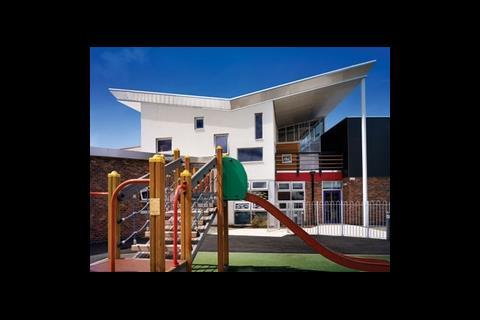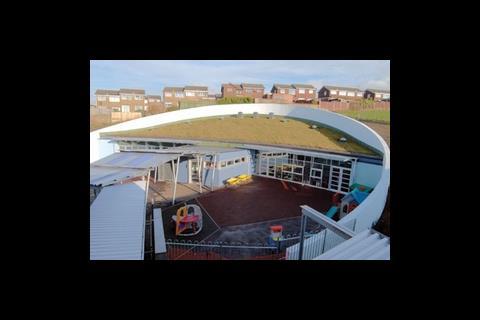Analysing energy use across a range of educational facilities has helped one PFI agency pinpoint just how and where savings can be made, as Tom Lawson reports
The Private Finance Initiative (PFI) hasn’t been without controversy. But one good thing to come out of the government’s scheme is that property owners and operators are more focused on the running costs of buildings, vital in the light of increasing energy prices.
Take Transform Schools (Stoke), or TSSL. Established under the government’s PFI scheme to refurbish and maintain 125 primary and secondary schools on behalf of Stoke City Council, it realised that any savings it makes on individual buildings could quickly add up. So TSSL set out in 2006 to undertake a comprehensive study of the energy use across its estate. This consists of buildings from the Victorian era through to newly built bespoke schools, and with refurbished schools and sites that have changed very little since their construction.
TSSL was assisted by Haden Building Management (HBML), which manages the estate, in collecting the data during a 12-month period from October 2004 to September 2005. This included information relating to the gross internal floor area and monthly gas and electricity consumption, along with cost data and a summary of the school characteristics. This period provided the most uniform data because there was no construction or other refurbishment works ongoing that could affect gas or electricity use in the study schools.
In total, 56 schools from the estate – schools with no work done to them, refurbished primary schools and six new-build primary schools – were included in the study. Those with ongoing refurbishments were omitted because these might have had abnormally high electricity use.
Drawing conclusions
Armed with the energy consumption data from the study, TSSL made a comparison with the typical practice national benchmarks for schools published in the DfES’ report on energy and water benchmarks for maintained schools in England, released in 2000-2001 and updated in 2002-2003 (see Figure 1).
Looking at the median value for combined gas and electricity use, it can be seen that there has been a reduction in overall energy use of more than 25% after refurbishment (see Table 1). However, comparing the median combined energy consumption with the median (2003), and the good, typical and poor practice levels (2001) quoted in the DfES reports, it can be seen that consumption at both the new-build and refurbished schools is higher than the 2003 median and UK typical practice.
Another interesting finding was that, while there has been a significant reduction in gas use between unaltered schools and refurbished and new-build ones, the reverse is true of electricity use (see Table 2). The fact that new-build schools are more gas-efficient than typical practice is not surprising (see Table 3). This is undoubtedly a result of them having been refurbished in line with more recent standards, requiring better thermal insulation, improved glazing and replacement doors, which reduces the use of gas for space heating.
The relatively high electricity use is probably a combination of several factors. These include:
- A rapid rise in the use of personal computers
- A similar increase in the use interactive whiteboards and other information technology
- Increased levels of lighting
- Water coolers, vending machines and so on
- Common use of CCTV and security lighting
- An increased use in portable electrical appliances by staff and pupils, such as kettles, mobile telephone and portable game chargers.
One other contributor is the day-to-day use of facilities and equipment. Within the individual schools where HBML has the facilities management contract, heating and lighting control can be difficult to manage. For example, staff and pupils leave windows open with the heating on, tamper with thermostatic radiator valves, fail to turn off lights when leaving rooms and even, occasionally, manually override the building management systems that would otherwise shut off heating at weekends.
Transform Schools is to address these habits by launching an environmental awareness programme across all of its school projects to help them work towards DfES’s Sustainable Schools targets. The initiative will motivate pupils and teachers to form environmental groups, complete environmental audits and develop action plans. Schools will receive teaching guides, lesson plans and audio-visual resources.
The study highlighted that many factors can be involved with energy management, many of which are outside the control of facilities management companies. Some points currently under consideration include:
- Better use of BEMS to enable improved management of gas use; this may include adding additional heating zones and sensor areas
- Increasing zoning sensors and ambient air temperature sensors to allow HBML to have greater control over the heating
- More regular assessment of BEMS and meter reading data to allow anomalies to be identified and investigations to be carried out
- Working with staff and caretakers to raise the profile of the importance of managing energy throughout the schools estate, targeting the schools with poor energy performance.
TSSL is not aware of any proposal to update or revise the DfES school energy use data, but it is suggested that any future revision should take account of the recent rapid increases in the use of electrical equipment in schools and also the increased use of school buildings outside normal school hours. Schools with a high energy use per square metre are not necessarily less energy efficient: they may just be providing more equipment and making this available for longer hours.
Perhaps an alternative method of benchmarking could be used, for example, kWh/m2 of floor area per hour? This could provide an improved means of assessing the energy performance of schools and their associated buildings on an hours-used basis.
Whatever method is used to monitor and measure, TSSL believes the involvement of clients, staff, contractors, teachers and pupils in managing their schools’ energy use can be the most cost-effective and rewarding means of reducing energy use and saving energy costs.
Source
Building Sustainable Design
Postscript
Tom Lawson is environmental advisor for Transform Schools
For further information see www.transformschools.co.uk
























No comments yet